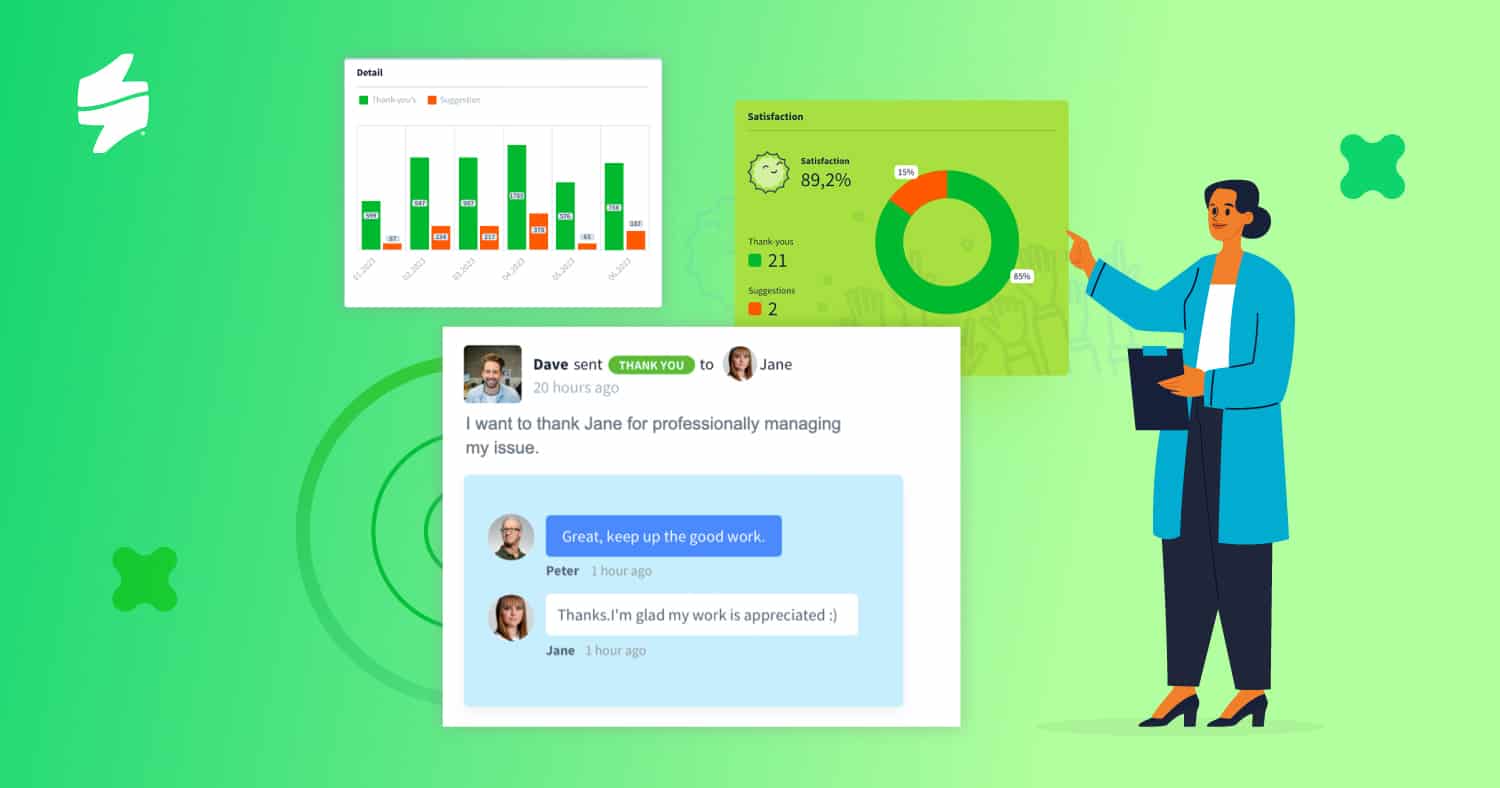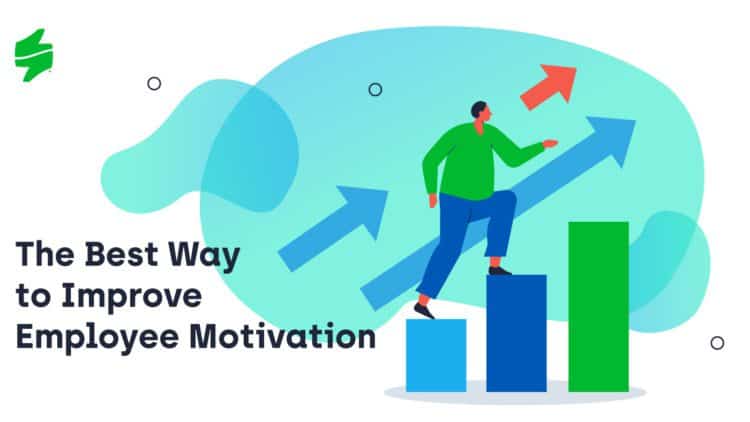Imagine a workplace where employees are fully immersed and passionate about their work—now that’s a recipe for success! How can such levels of employee engagement be achieved?
Employee engagement at work has become a buzzword in the corporate world, and for good reason. In today’s competitive business landscape, organisations are realising that engaged employees are the driving force behind success. But what is engagement, and how can it be measured and improved?
In this comprehensive article, we will delve deep into the world of employee engagement, exploring its definition, significance, measurement techniques, and strategies for improvement. Additionally, we will discuss the role of employee engagement software, such as Staffino, in facilitating this process.
What is the Definition of Employee Engagement?
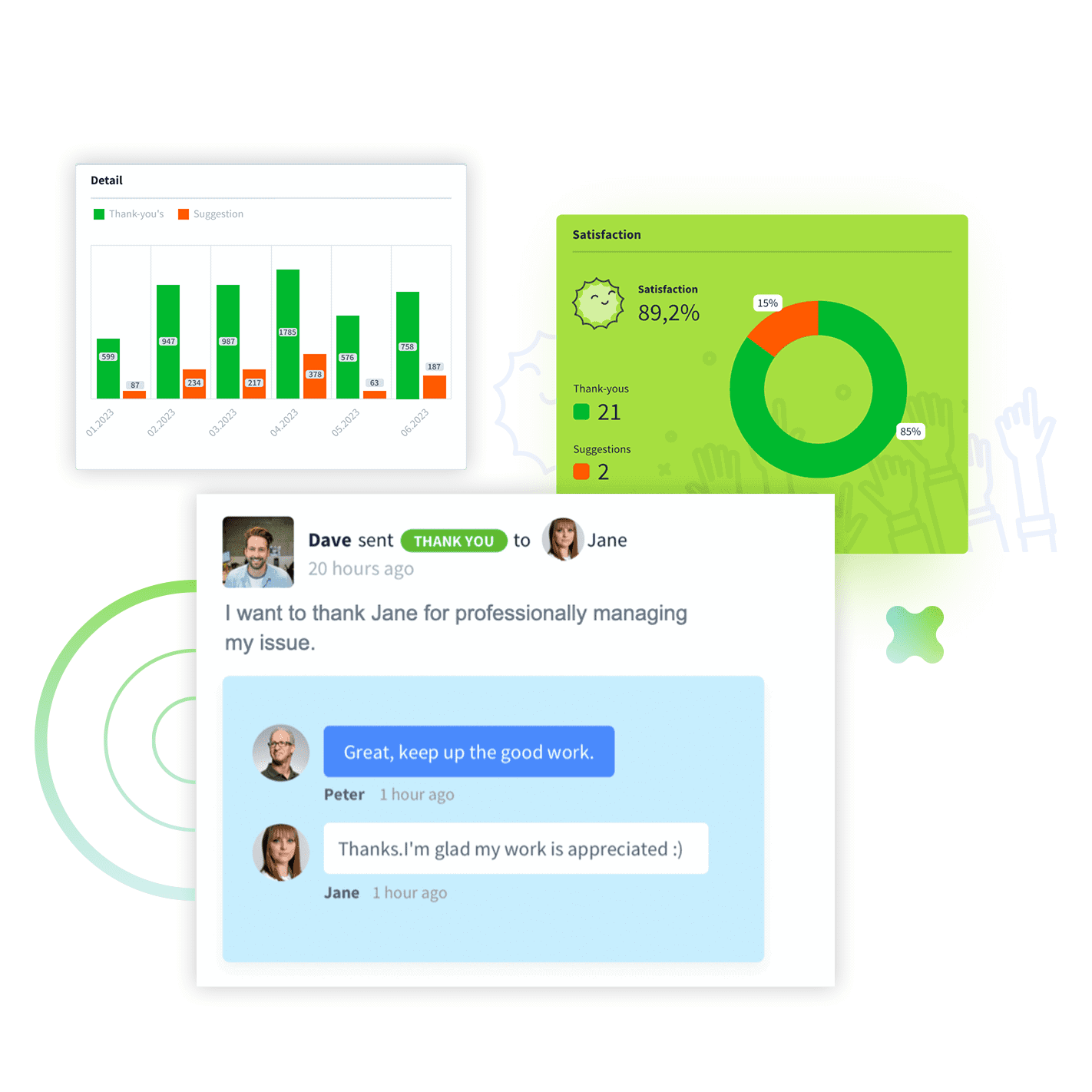
Employee engagement meaning is often confused with employee motivation, but they are not the same thing. Employee engagement can be defined as the emotional commitment and dedication an employee feels towards their organisation. Engaged employees are passionate about their work, aligned with the company’s goals, and willing to go the extra mile to contribute to its success. They are not only motivated but also deeply connected to their roles, colleagues, and the overall mission of the organisation.

Increase Employee Engagement with Staffino
Gain valuable insights into your team's motivation, morale, and satisfaction! Our EX surveys provide you with the data you need to take the right steps to increase employee engagement and productivity.
Defining the 3 Stages of Employee Engagement
There are three distinct levels of engagement that individuals can experience in their work environment.
- Job engagement: What is job engagement? It is the first level of engagement, which refers to the degree of connection a person feels towards the tasks they are performing. It involves a sense of purpose and fulfilment derived from the work itself. To assess job engagement (or work engagement), one may ask themselves, “How connected am I to the work I am currently engaged in?”
- Team engagement: What is team engagement? This concept pertains to the level of connection an individual feels towards their immediate coworkers. It involves collaboration, camaraderie, and a sense of belonging within the team. To evaluate team engagement, one might ask, “How connected do I feel to the colleagues I work closely with?”
- Organisational engagement: Lastly, there is organisational engagement, which focuses on the level of connection an individual has with the organisation as a whole. It encompasses a sense of alignment with the company’s values, goals, and overall mission. To gauge organisational engagement, one could ask, “How connected am I to the broader organisation and its purpose?”
By understanding and evaluating these three levels of engagement, individuals (and their managers) can gain insights into their overall employee experience and sense of belonging within their work environment.
What Are the 5 C’s of Employee Engagement?
To better understand the various dimensions of employee engagement, experts have identified the 5 C’s framework. These are:
1. Connection: Engaged employees feel a strong sense of connection with their organisation. They believe in its values, vision, and purpose and actively seek opportunities to contribute.
2. Commitment: Engaged employees are committed to their work and the success of the organisation. They display loyalty, dedication, and a willingness to invest their time and effort to achieve shared goals.
3. Contribution: Engaged employees are eager to make a meaningful contribution to their organisation. They actively participate, share ideas, and take ownership of their work, driving innovation and growth.
4. Communication: Effective communication is essential for employee engagement. Engaged employees feel heard, understood, and empowered to express their thoughts and concerns openly.
5. Culture: Engaged employees thrive in a positive and supportive work culture. They value collaboration, teamwork, and a sense of belonging, which fosters their overall engagement.
What Are the 4 E’s of Employee Engagement?
In addition to the 5 C’s, another framework that sheds light on employee engagement is the 4 E’s model. These are:
1. Engage: This refers to the emotional connection employees have with their work, colleagues, and organisation. Engaged employees find meaning and purpose in what they do, resulting in higher job satisfaction.
2. Enable: Organisations need to provide employees with the necessary resources, tools, and support to perform their best. Enabling employees ensures that they have the means to achieve their goals and contribute effectively.
3. Energise: Engaged employees are energised by their work. They are motivated and enthusiastic and experience a sense of accomplishment. Energising employees involves recognising their efforts, celebrating achievements, and fostering a positive work environment.
4. Empower: Empowered employees have a sense of autonomy and control over their work. They are trusted to make decisions, take ownership, and contribute to the organisation’s success. Empowerment leads to higher job satisfaction and increased engagement.
What Is the Significance of Employee Engagement?
Why is employee engagement important? Employee engagement is not just a feel-good concept; it has a significant impact on organisational success. Engaged employees are more productive, innovative, and customer-focused. They are less likely to leave your organisation, reducing turnover costs and maintaining institutional knowledge. Engaged employees also contribute to a positive work culture, leading to higher employee morale and satisfaction. Ultimately, organisations with high levels of employee engagement have a competitive advantage in the market.
The Impact of Different Levels of Employee Engagement
Understanding the impact of different levels of employee engagement is crucial for any organisation. Let’s explore how highly engaged, moderately engaged, barely engaged, and totally disengaged employees can influence your company:
1. Highly engaged employees: Highly engaged employees are the backbone of any successful organisation. They are motivated, committed, and consistently go above and beyond to achieve exceptional results. These employees are passionate about their work, actively contribute to the organisation’s goals, and inspire their colleagues.
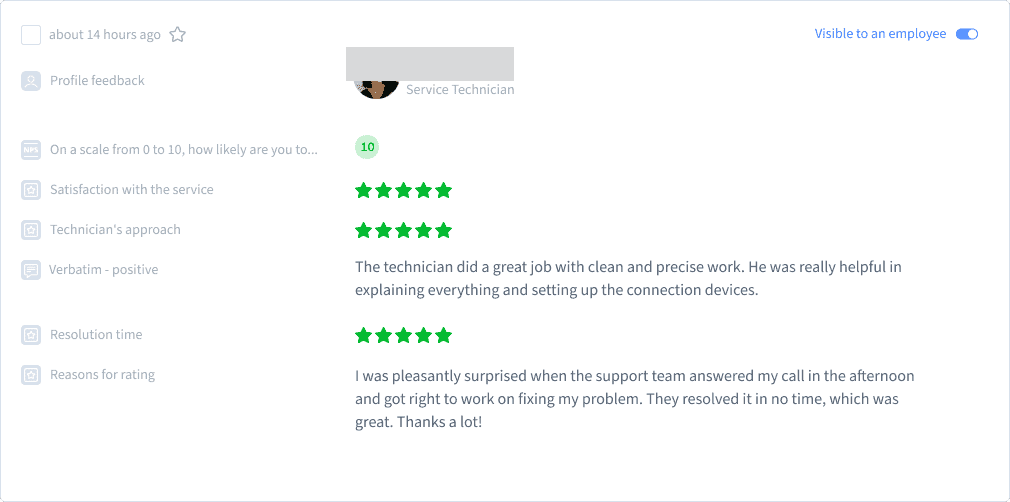
2. Moderately engaged employees: Moderately engaged employees are generally satisfied with their work and contribute adequately. However, they may lack the same level of passion and commitment as highly engaged employees. While they perform their duties well, there is room for improvement in terms of their dedication and willingness to go the extra mile.
3. Barely engaged employees: Barely engaged employees are typically disinterested and disconnected from their work. They may complete their tasks but lack enthusiasm and fail to contribute to the organisation’s success actively. These employees often require intervention to prevent their disengagement from spreading to others.
4. Totally disengaged employees: Totally disengaged employees pose a significant threat to organisational success. They are unmotivated and unproductive and may even display negative behaviours that impact team dynamics. These employees can have a detrimental effect on morale, productivity, and overall company culture.
Employee Engagement Statistics You Need to Know
Not only does employee engagement at work lead to higher profitability and revenue growth, but it also reduces turnover rates, absenteeism, and safety incidents. If you ever wondered how to maintain customer satisfaction, it again starts with engaged employees! In this section, we will explore some key statistics that highlight the importance of employee engagement:
1. According to Gallup, highly engaged teams show 21% greater profitability. (Source: Gallup)

2. Engaged employees are 87% less likely to leave their organisations than disengaged employees. (Source: Corporate Leadership Council)
3. A study by Aon Hewitt found that organisations with high levels of employee engagement have a 4.5 times higher revenue growth compared to those with low engagement levels. (Source: Aon Hewitt)
4. Engaged employees have a 41% lower absenteeism rate compared to disengaged employees. (Source: Gallup)
5. Companies with engaged employees have 10% higher customer satisfaction survey scores. (Source: Temkin Group)

Get Actionable Insights with Closed Loop Feedback Management
With Staffino, you'll never leave a customer unhappy again! Streamline the process of collecting and responding to feedback, identify areas of improvement, and make sure that customer issues are addressed quickly and effectively.
6. Highly engaged teams have a 59% lower turnover rate compared to teams with low engagement. (Source: Gallup)
7. Engaged employees are 21% more productive than their disengaged counterparts. (Source: Gallup)
8. Organisations with engaged employees experience a 41% reduction in quality defects. (Source: Gallup)
9. Companies with engaged employees have a 70% lower safety incident rate. (Source: Gallup)
10. Engaged employees generate 2.5 times more revenue than disengaged employees. (Source: Hay Group)
Measuring Employee Engagement in Your Workplace
Now that you know the benefits of employee engagement, it’s time to find out how engaged your employees really are! Measuring employee engagement is essential to identify areas of improvement and track progress over time. Here are some commonly used methods to measure employee engagement:
1. Employee Engagement Surveys
Conducting regular employee surveys is an effective way to gather feedback and gauge employee engagement levels. These surveys can include both quantitative and qualitative questions to capture a comprehensive picture of engagement within your organisation.
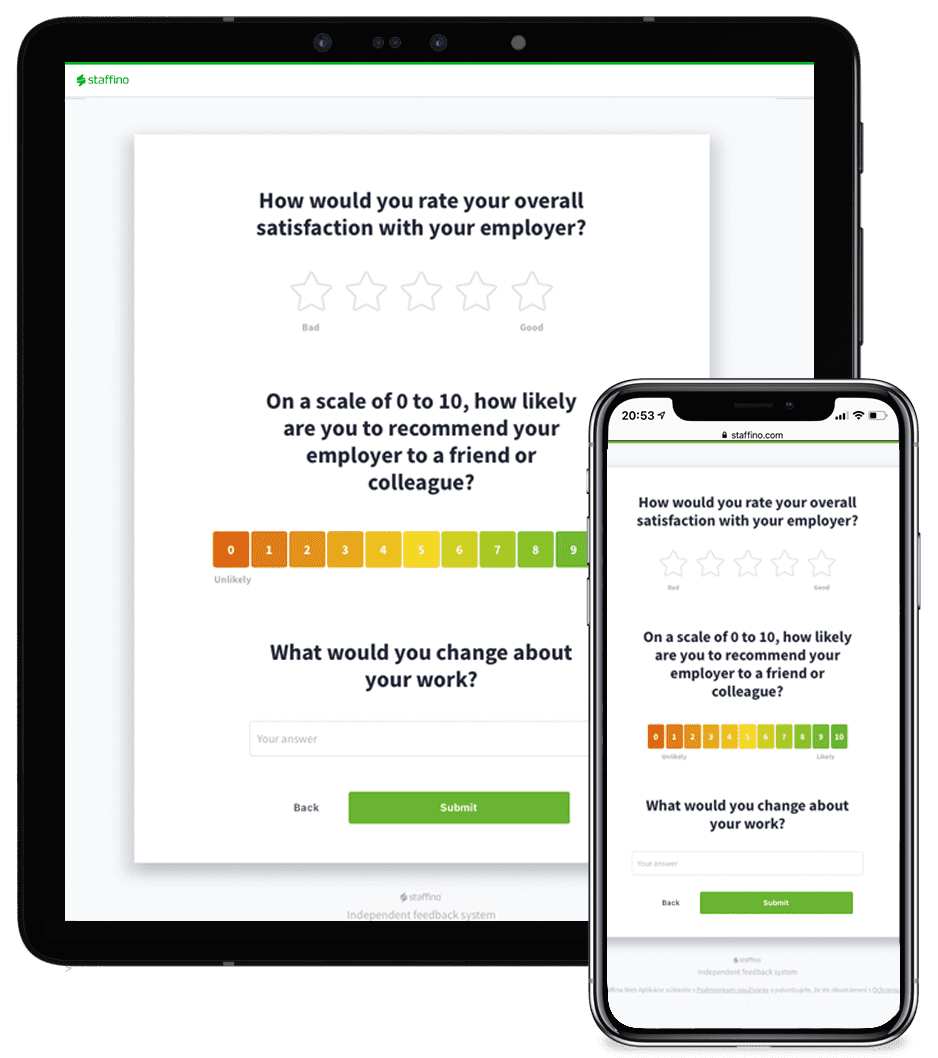
By utilising a combination of different types of employee surveys, you can gain a more comprehensive understanding of employee engagement levels and identify specific areas for improvement. It is important to regularly review and analyse the survey results to inform strategic decision-making and implement targeted initiatives that can enhance employee engagement and overall organisational performance. Here are the most common types of surveys:
- Pulse surveys or pulse checks: Pulse surveys are short, frequent surveys that are conducted on a regular basis, such as monthly or quarterly. These surveys typically consist of a few key questions that are designed to assess employee engagement levels quickly. Pulse surveys provide a snapshot of engagement at a specific point in time and can help identify any immediate concerns or trends.
- Annual surveys: Annual surveys are more comprehensive and in-depth surveys that are conducted once a year. These surveys typically cover a wide range of topics related to employee engagement, such as job satisfaction, communication, leadership, and overall organisational culture. Annual surveys allow for a more holistic understanding of engagement levels and provide an opportunity to track progress and identify areas for improvement over time.
- Onboarding surveys: Onboarding surveys are administered to new employees during their initial weeks or months with the organisation. These surveys aim to assess the effectiveness of the onboarding process and identify any gaps or areas for improvement. By measuring engagement levels early on, organisations can address any concerns or issues that may impact the long-term engagement and retention of new employees.
- Exit surveys: Exit surveys are conducted when an employee is leaving the organisation. These surveys provide valuable insights into the reasons for employee turnover and can help identify any systemic issues that may be negatively impacting engagement and employee retention. Exit surveys can be used to gather feedback on various aspects of the employee experience, such as job satisfaction, work-life balance, career development opportunities, and organisational culture.
2. Employee Performance Metrics
Analysing employee performance metrics, such as productivity, quality, and customer satisfaction (CSAT), can provide insights into employee engagement. Engaged employees tend to outperform their disengaged counterparts, showcasing the impact of engagement on organisational outcomes.
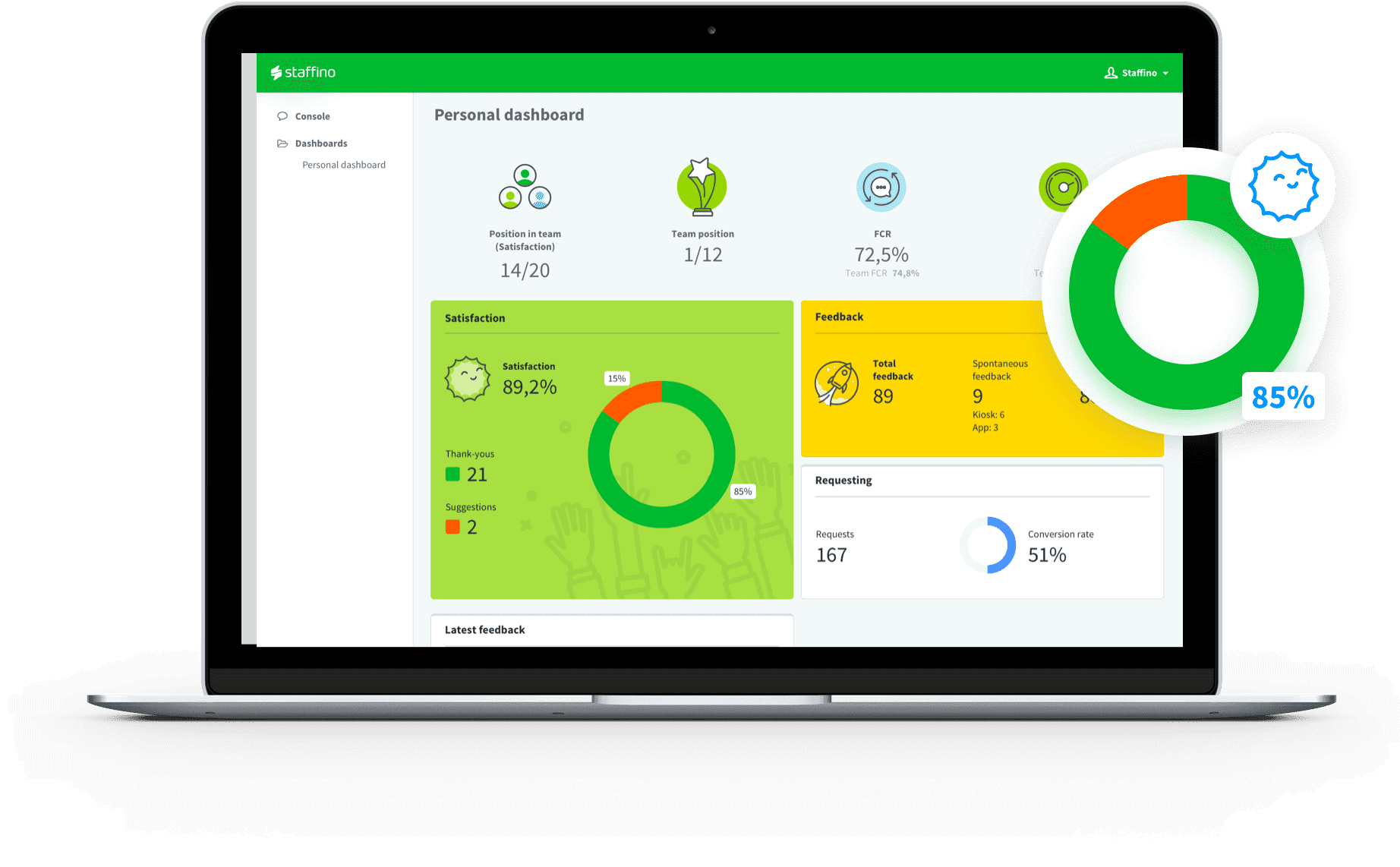
3. Absenteeism and Turnover Rates
High absenteeism and turnover rates can be indicative of low employee engagement. Monitoring these metrics can help identify potential issues and take proactive measures to improve engagement.
4. Focus Groups and Interviews
Focus groups involve gathering a small group of employees to discuss and provide feedback on specific topics related to engagement. This approach allows for more in-depth discussions and provides qualitative insights that may not be captured through quantitative surveys alone.
Engaging in open discussions with employees through focus groups and interviews can provide valuable insights into their perceptions, concerns, and suggestions for improvement. These qualitative methods offer a deeper understanding of the underlying factors influencing their engagement.
Top 10 Employee Engagement Survey Questions to Include in Your Employee Engagement Survey

Are your employees engaged? Find out with an employee engagement survey! When designing an employee engagement survey, it is crucial to include questions that capture the various dimensions of engagement. Here are ten sample questions to consider:
Q: On a scale of 1-10, how connected do you feel to the organisation’s mission and values?
Measuring the level of connection employees feel towards your organisation’s mission and values is important as it reflects their alignment with the organisation’s purpose. A high level of connection indicates that employees understand and believe in the organisation’s goals, which can lead to increased staff motivation and commitment.
Q: Do you feel that your work contributes to the overall success of the organisation?
This question helps assess your employees’ perceptions of their impact on the organisation. When employees feel that their work is meaningful and contributes to the organisation’s overall success, they are more likely to be engaged and motivated to perform at their best.
Q: How satisfied are you with the communication channels within the organisation?
Effective communication is crucial for workforce engagement. This question helps identify any communication gaps or issues within your organisation. When your employees feel that communication channels are open, transparent, and efficient, they are more likely to feel informed, engaged, and connected to the organisation.
Q: Do you feel empowered to make decisions and take ownership of your work?
Empowerment is a key driver of workforce engagement. When employees feel trusted and empowered to make decisions and take ownership of their work, they are more likely to be motivated, innovative, and committed to achieving organisational goals.
Q: How supported do you feel by your immediate supervisor?
The relationship between employees and their immediate supervisors plays a significant role in engagement. Employees who feel supported by their supervisors are more likely to feel valued, motivated, and satisfied in their roles. This question helps identify any areas where additional support or improvement may be needed.
Q: Are you recognised and appreciated for your efforts and achievements?
Recognition and rewards are essential for fostering a positive work environment and increasing workforce engagement. When employees feel recognised and appreciated for their efforts and achievements, they are more likely to feel valued, motivated, and committed to the organisation.

Unlock Your Team's Full Potential with Staffino's EX Products
Our EX platform can help you attract and retain top talent, track employee performance, and improve engagement and productivity – so your team can reach their highest potential.
Q: Do you have opportunities for growth and development within the organisation?
Providing opportunities for growth and development is crucial for workforce engagement and retention. When employees have access to training, learning opportunities, and career advancement prospects, they are more likely to feel valued, motivated, and committed to the organisation.
Q: How satisfied are you with the work-life balance provided by the organisation?
Work-life balance is an important aspect of employee well-being and engagement. This question helps assess whether your organisation is providing a supportive work environment that allows employees to maintain a healthy balance between work and personal life.
Q: Do you feel that your opinions and suggestions are valued and taken into consideration?
Employees who feel that their opinions and suggestions are valued are more likely to be engaged and motivated. This question helps assess your organisation’s openness to employee feedback and whether your employees feel their voices are heard and respected.
Q: Would you recommend this organisation as a great place to work?
This question provides an overall measure of employee satisfaction and engagement. Employees who are highly satisfied and engaged are more likely to recommend your organisation as a great place to work, which can positively impact employer branding and talent acquisition efforts.
What to Do With Employee Engagement Survey Results?
Once you have collected employee engagement survey results, it is essential to take action based on the findings. Here are some steps to consider:
1. Analyse the data: Thoroughly analyse the survey results to identify patterns, trends, and areas of improvement. Look for both strengths and weaknesses within the organisation.

2. Communicate findings: Share the survey findings with employees to demonstrate transparency and create a sense of ownership. Communicate the organisation’s commitment to addressing the identified areas of improvement.
3. Develop action plans: Based on the survey results, develop action plans to address specific areas of concern. Set realistic goals, establish timelines, and allocate resources to implement the necessary changes. You can read more about how to develop an effective employee engagement action plan in the section below.
4. Employee involvement: Involve employees in the decision-making process and implementation of action plans. This fosters a sense of ownership, empowers employees, and ensures that their voices are heard.
5. Continuous evaluation: Regularly evaluate the effectiveness of the implemented changes and monitor progress. Collect feedback from employees to assess whether the initiatives are positively impacting engagement levels.
Remember that you can always hire a professional EX and CX consulting expert to help you analyse your survey results and create an effective action plan!
Creating an Employee Engagement Action Plan in 6 Steps
Creating and implementing an effective employee engagement action plan can be challenging. In this part, we will guide you through the step-by-step process of creating an employee engagement plan.
Step 1: Assess the current state of engagement
Before creating an action plan, it is essential to understand the current level of employee engagement in the workplace. Conduct the abovementioned employee engagement surveys, focus groups, or interviews to gather feedback from employees. This will help identify areas of strength and weakness in your organisation’s engagement levels.
Step 2: Set clear goals and objectives
Based on the assessment, set clear and measurable goals for improving employee engagement. These goals should align with your organisation’s overall objectives and values. For example, you may aim to increase employee satisfaction by a certain percentage or reduce turnover rates.
Step 3: Identify key drivers of engagement
Identify the key factors that drive employee engagement in the workplace. This could include factors like effective communication, recognition and rewards, career development opportunities, work-life balance, and a positive work environment. Understanding these drivers will help you focus your efforts on the areas that matter most to your employees.
Step 4: Develop strategies and initiatives
Based on the identified drivers, develop specific strategies and initiatives to improve employee engagement. For example, if communication is a key driver, you might implement regular team meetings, create an open-door policy, or introduce an internal communication platform. Ensure that these strategies are aligned with your organisation’s goals and values.
Step 5: Assign responsibility and set a timeline
Assign responsibility for implementing each strategy or initiative to specific individuals or teams. Set a realistic timeline for each action and ensure that the responsible parties are accountable for their implementation. Regularly review progress and make adjustments if necessary.
Step 6: Communicate and involve your employees
Communication is vital throughout the entire process. Clearly communicate the action plan, its objectives, and the expected outcomes to all employees. Involve employees in the process by seeking their input, feedback, and suggestions. This will not only make them feel valued but also increase their commitment to the action plan.
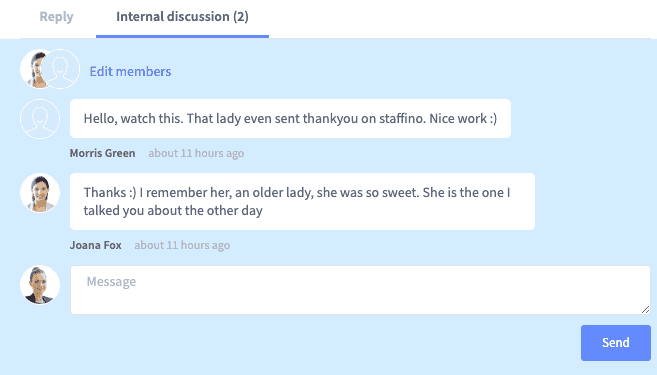
How to Improve Employee Engagement? Top 8 Employee Engagement Strategies to Implement in Your Team
How do you improve employee engagement in your workplace? Improving employee engagement requires a holistic approach that considers various aspects of the employee experience. Here are eight strategies to enhance engagement within your organisation:
1. Foster a positive work culture
Create a positive work environment that promotes open communication, collaboration, and recognition. Encourage teamwork, celebrate achievements, and provide opportunities for personal and professional growth.

2. Enhance leadership skills
Invest in leadership development programs to equip managers with the skills to effectively engage employees and motivate their teams. Strong leadership plays a crucial role in fostering staff engagement.
3. Provide growth opportunities
Offer opportunities for career development, such as training programs, mentorship, and promotions. Employees who see a clear path for growth within the organisation are more likely to remain engaged and committed.
4. Recognise and reward employees
Implement an employee motivation platform that offers employee recognition and rewards programs to acknowledge employees’ efforts and achievements. Recognition can be in the form of verbal praise, monetary rewards, or non-monetary incentives, such as flexible work arrangements.

Give Your Employees the Recognition and Motivation They Deserve
Does your team need a little extra motivation? Our platform provides powerful insights into your team’s performance and various recognition tools that help ensure everyone feels appreciated.
5. Improve work-life balance
Encourage work-life balance by offering flexible work options, promoting wellness initiatives, and providing support for personal obligations. Employees who feel supported in managing their personal and professional lives are more engaged and productive.
6. Enhance communication channels
Establish effective communication channels that encourage two-way dialogue. Share updates regularly, solicit feedback, and address employee concerns promptly. Transparent communication builds trust and engagement.

7. Empower employees
Delegate decision-making authority and empower employees to take ownership of their work. Provide autonomy, trust, and opportunities for employees to contribute their ideas and suggestions.
8. Continuous learning and development
Invest in employee development programs that enhance skills, knowledge, and competencies. Offering opportunities for continuous learning not only improves engagement but also equips employees with the tools they need to excel in their roles.
Employee Engagement Best Practices and Examples
Let’s now look at some best practices and real-life examples from successful companies:
1. Fostering a positive work environment
Companies like Google and Zappos prioritise creating a positive work environment that promotes employee well-being, collaboration, and creativity. They offer perks like flexible work hours, comfortable office spaces, and opportunities for personal growth and development.
2. Providing recognition and rewards
Salesforce is known for its robust employee recognition program. It encourages peer-to-peer recognition, provides monetary rewards, and even offers employees paid time off to volunteer for charitable causes. Recognising and rewarding employees for their contributions can significantly boost engagement.
MALL.CZ, an online retailer, implemented a unique employee recognition strategy by incorporating gamification into their workplace. They used Staffino’s employee gamification module to create a system where customer support agents could earn points and badges based on their customer feedback and satisfaction. This approach not only made work more enjoyable but also fostered healthy competition among call centre teams.
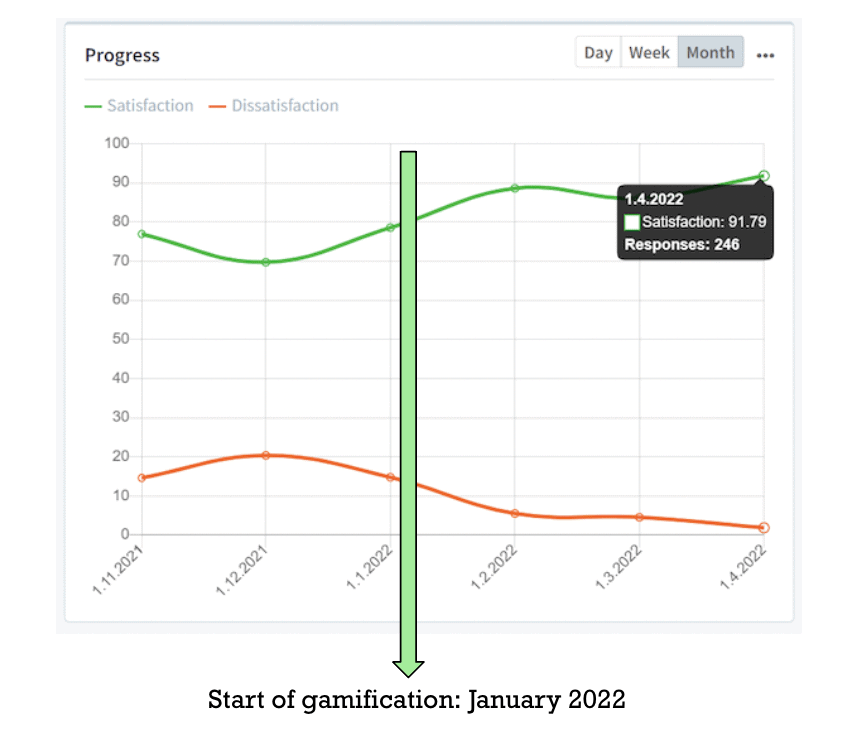
As a result, MALL.CZ saw a significant improvement in customer satisfaction (2–10%) in teams where gamification was properly explained and supported by the managers. Read more about this successful employee engagement example in our case study.

Boost Employee Productivity through Gamification
Motivate and reward your employees with Staffino's Employee Gamification. Our platform provides custom challenges, rewards, and leaderboards to help you increase productivity and engagement.
3. Promoting work-life balance
IBM is renowned for its work-life balance initiatives. They offer flexible work arrangements, on-site childcare facilities, and wellness programs. Supporting employees in achieving a healthy work-life balance can enhance engagement and reduce burnout.
4. Empowering employees
Volkswagen Financial Services is a renowned financial institution that focuses on providing financing solutions for both passenger and commercial vehicles. A key aspect of their employee engagement strategy is to foster a sense of ownership and encourage active participation in their work.
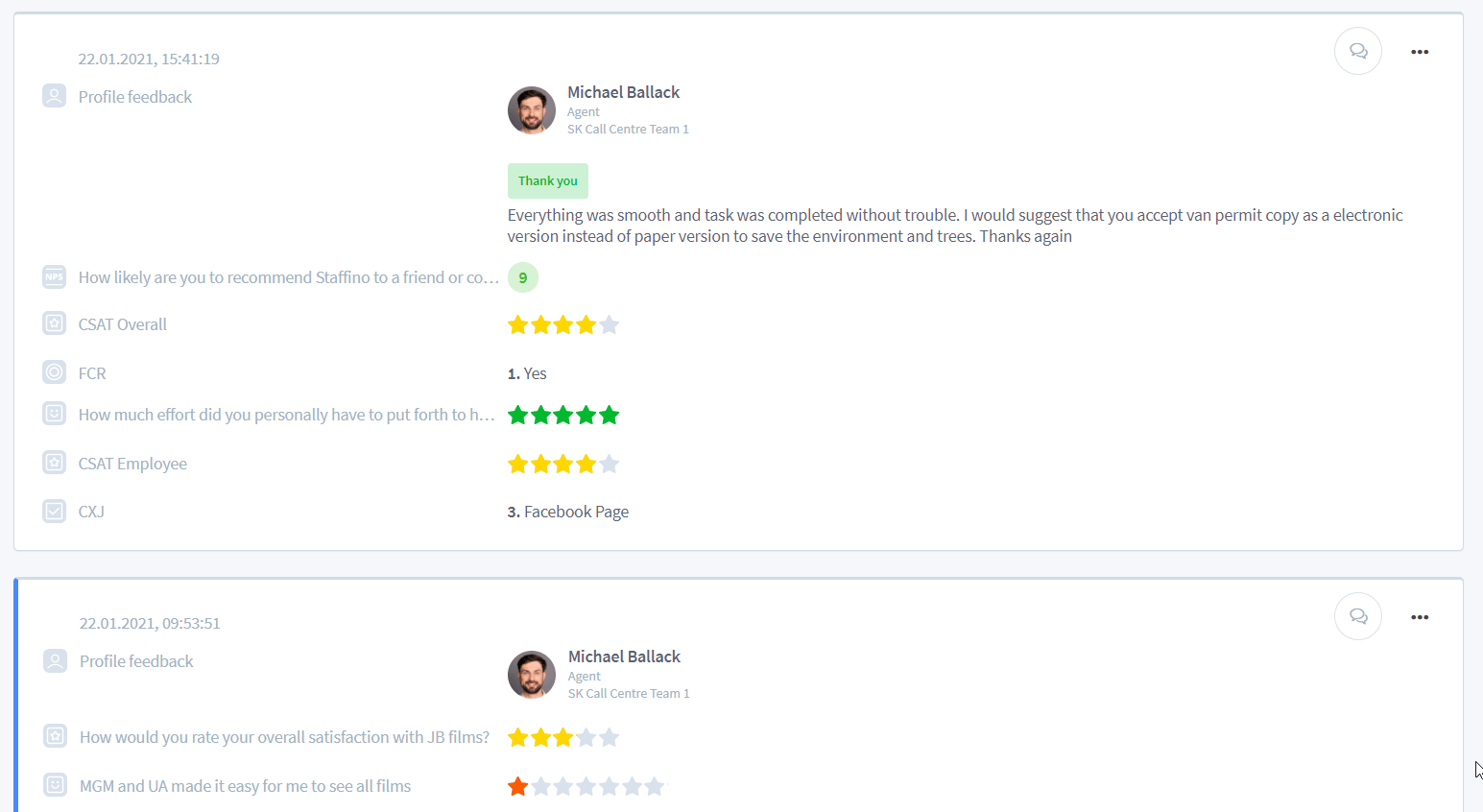
To enhance employee engagement, the Czech division of VWFS implemented Staffino in 2017. This online platform enables front-line employees to contribute to problem-solving and share feedback actively. By empowering its employees to address customer concerns internally and offer suggestions for improvement, the company is engaging employees and building customer loyalty at the same time. Read more about their employee engagement strategy in this case study.
“Today, it is already standard for us that in the case of receiving a comment from our customer, the employee will automatically send a message about this particular case to the manager in the application. This way, we do not only get the employee’s view of the situation but possibly also an idea for improvement.”
Dan toma
OPERATIONS SPECIALIST EUROPE, VWFS
5. Encouraging career development
LinkedIn is a prime example of a company that prioritises career development. They provide employees with opportunities for continuous learning, mentorship programs, and clear pathways for advancement. Investing in employees’ professional growth shows that the organisation values their long-term success.
The Role of HR in Maintaining and Improving Employee Engagement
How do you improve employee engagement from the position of HR? HR professionals play a vital role in maintaining and improving employee engagement. This section of our guide will explore the various strategies and initiatives that HR can implement to foster a positive and engaged workforce.
1. Engaging employees through recruitment and selection
HR professionals can contribute to staff engagement right from the recruitment and selection process. By identifying candidates who align with the organisation’s values, culture, and goals, HR can ensure a better fit between employees and the organisation. This alignment increases the likelihood of employees being engaged and motivated in their roles.
2. Engaging employees through onboarding and orientation
Effective onboarding and orientation programs are essential for new employees to feel welcomed and integrated into the organisation. HR can create a structured onboarding process that includes providing clear job expectations, introducing employees to the company’s mission and values, and facilitating connections with colleagues. By establishing a positive initial experience, HR sets the foundation for long-term employee engagement.
3. Engaging employees through training and development
HR professionals can enhance employee engagement by offering continuous training and development opportunities. By investing in employees’ skills and knowledge, HR demonstrates a commitment to their growth and career advancement. Training programs can be tailored to individual needs and can include both technical and soft skills development. Engaged employees are more likely to feel valued and motivated to contribute to their organisation’s success.
4. Engaging employees through communication and feedback
HR professionals are responsible for facilitating effective communication channels within the organisation. By promoting open and transparent communication, HR can ensure that employees feel heard and valued. Organising regular feedback sessions, team meetings, and employee surveys can provide opportunities for employees to express their opinions, concerns, and suggestions. HR can then take appropriate actions to address these concerns and improve staff engagement.
5. Engaging employees through employee recognition and rewards
Recognising and rewarding employees’ contributions is vital to maintaining high levels of engagement. While recognition should be primarily in the hands of the managers, HR can also help develop recognition programs that acknowledge employees’ achievements, both big and small. This can include monetary rewards, public recognition, or opportunities for career advancement. By celebrating and appreciating employees’ efforts, HR reinforces a positive work environment and motivates employees to continue performing at their best.
By implementing these strategies, HR professionals can truly become champions of employee engagement within their organisations.
The Role of Employee Engagement Software in Improving Staff Engagement
Employee engagement software, such as Staffino, can play a significant role in measuring and improving engagement in your company. Staffino’s user-friendly online platform offers a range of features designed to enhance engagement, including:
1. Real-time customer feedback collection
Our employee engagement software enables customers to provide CX feedback in real time and automatically shares positive feedback with the relevant employees. This approach enhances employee morale by demonstrating the value of their work.
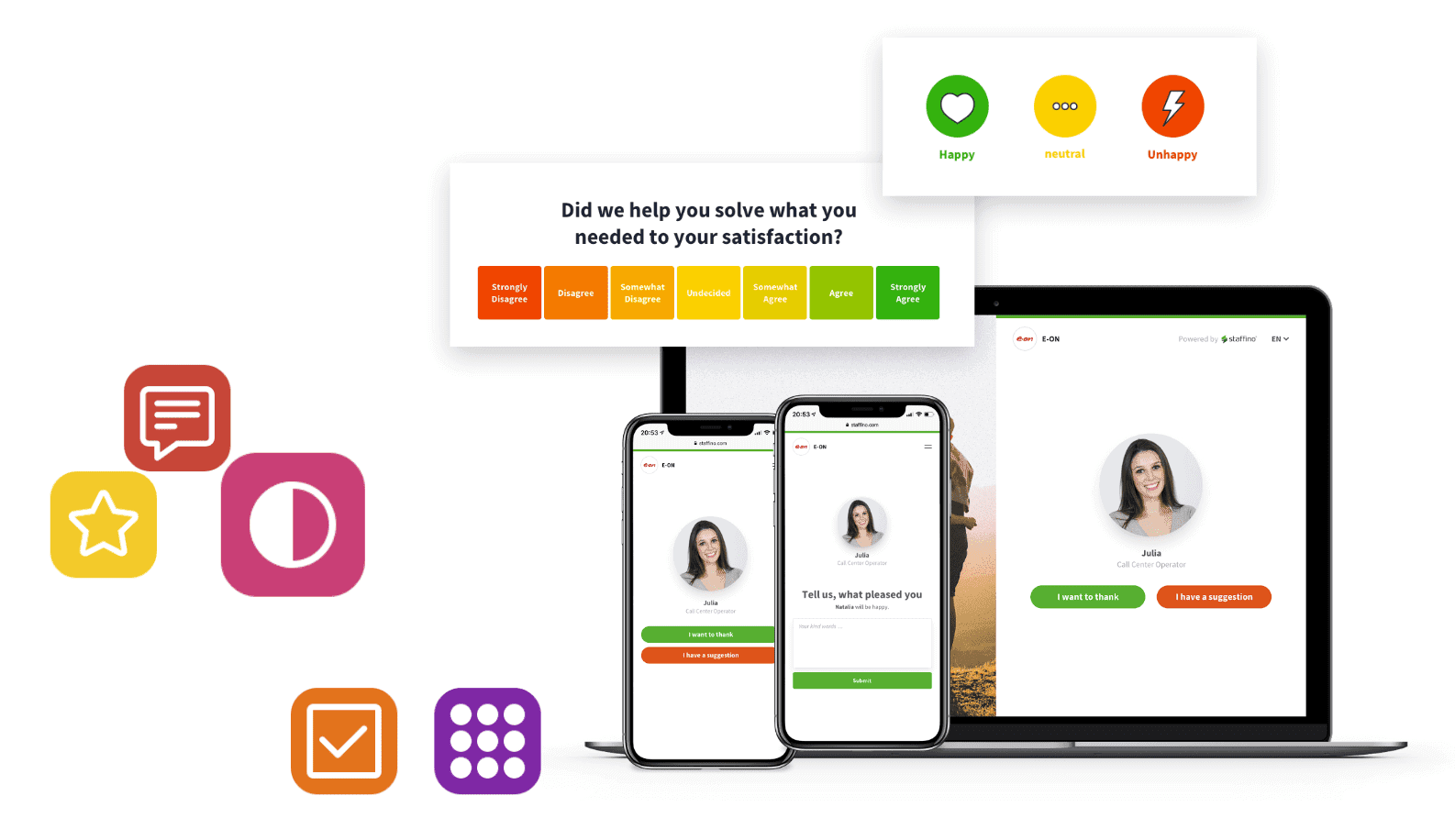
Staffino also allows managers to promptly address concerns and make necessary improvements, as negative feedback is only visible to them. They can initiate internal discussions with responsible employees directly through a chat related to the specific feedback. This closed-loop feedback system promotes a culture of open communication and demonstrates to employees that their opinions are highly valued.
2. Employee performance analytics
The software provides comprehensive employee performance dashboards, allowing our clients to track employee performance, identify trends, and measure the impact of employee engagement initiatives. This data-driven approach helps in making informed decisions and refining employee experience strategies.
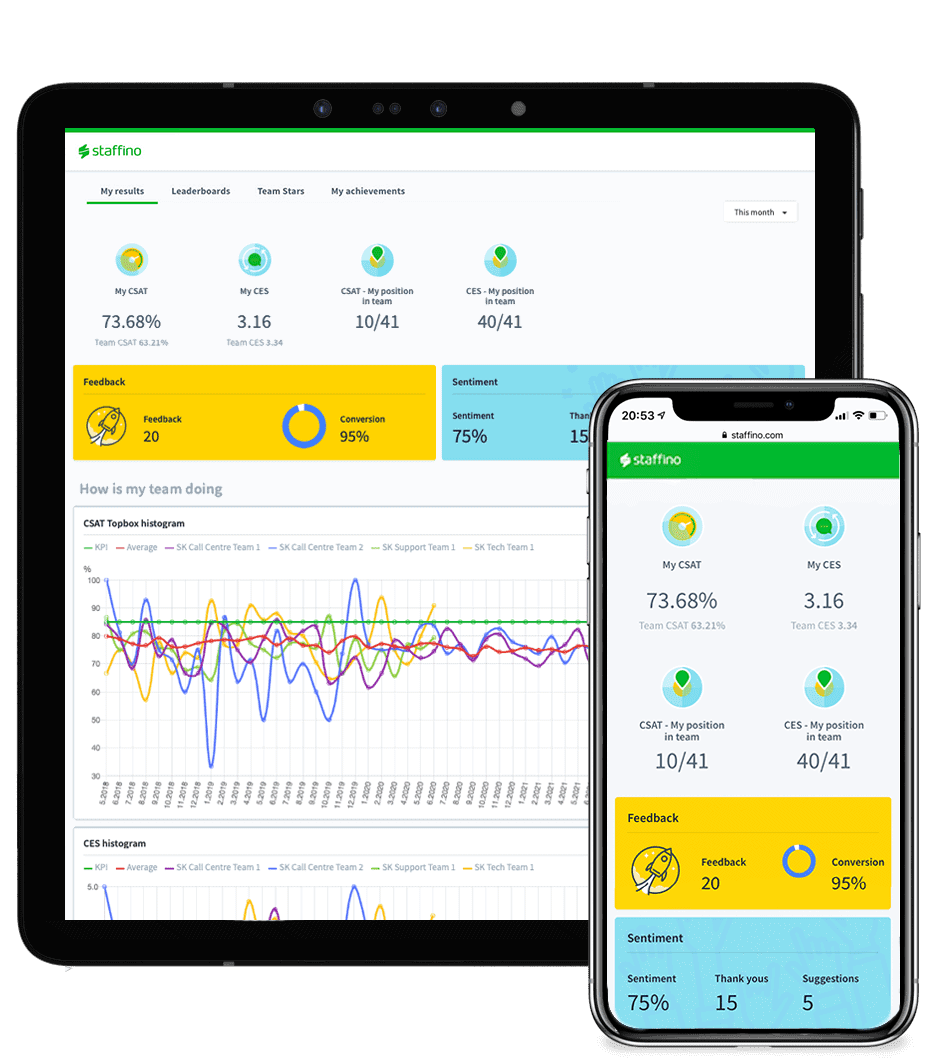
3. Daily employee recognition and rewards
Staffino allows managers to recognise employees in real time during internal discussions. When employees receive positive customer feedback or successfully resolve an issue, the manager is notified and can write a few encouraging words or a thank you message to the employee.
Additionally, using the performance data on our online platform, managers can reward employees with a variety of monetary and non-monetary incentives for their accomplishments. This enhances employee motivation management and overall engagement levels within the organisation.
4. Easy creation and distribution of employee surveys
Our online platform offers a user-friendly survey creator and customisable question templates to gather feedback from employees on specific topics or initiatives. These features help our clients understand their employee sentiments, identify areas for improvement, and make data-backed decisions.
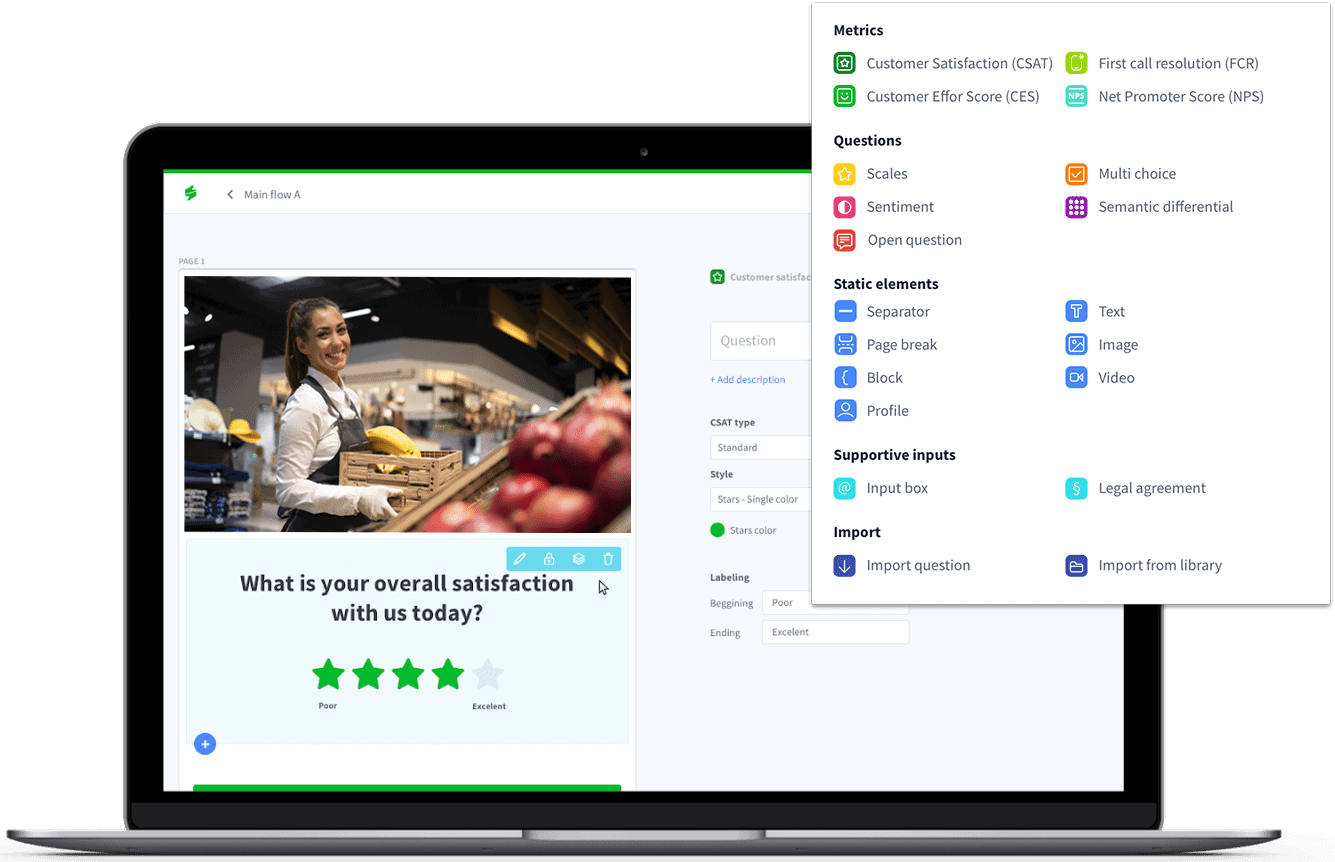
Start Improving Employee Engagement in Your Company Today!
Creating a staff engagement action plan requires a systematic approach that involves assessing the current state of engagement, setting clear goals, identifying key drivers, developing strategies, involving employees, and utilising the right tools.
By implementing best practices and learning from the examples we shared above, you can create a culture of engagement that drives business success.
If you need a helping hand, our employee engagement software can further enhance your efforts by providing valuable insights, facilitating employee feedback and communication, and streamlining engagement initiatives.
Book our free demo to see how the Staffino employee engagement tools work!

Get a First-Hand Experience Today!
Staffino is the perfect tool for creating engaging surveys, tracking performance, responding to customer feedback, and rewarding top employees. Get started today with our FREE demo!
